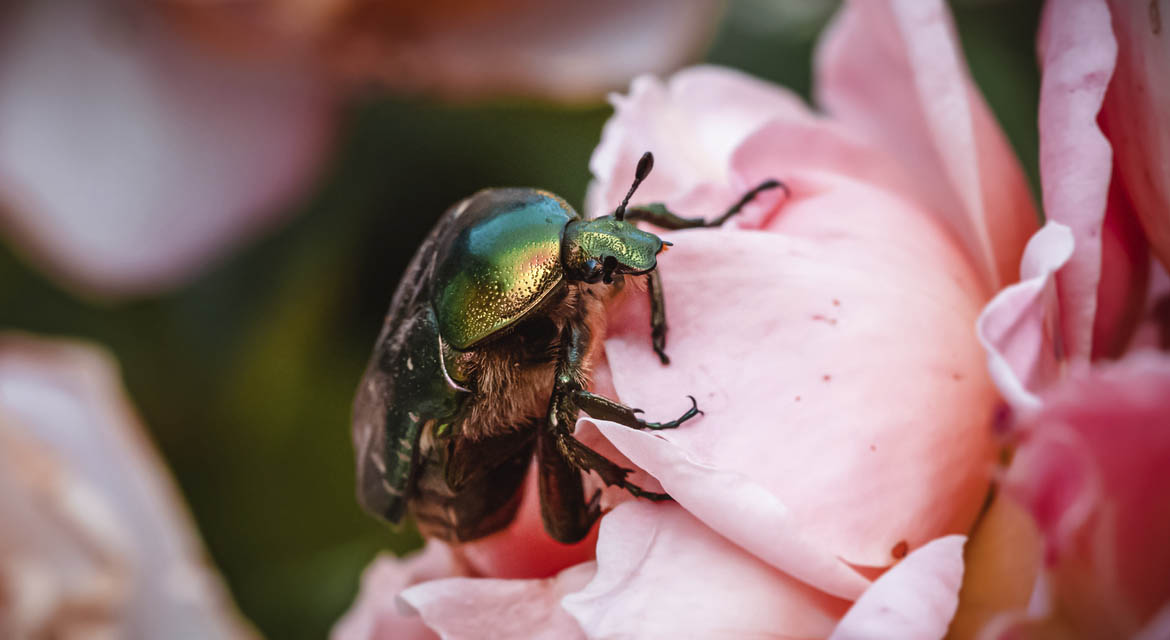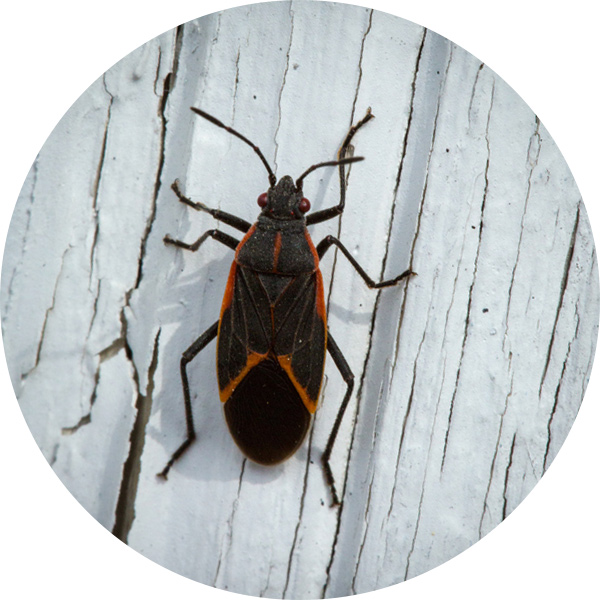
Beetle Facts & Information
A beetle infestation can have significant impacts depending on the species involved. While some beetles are harmless, others can cause damage to crops, stored goods, or property, leading to economic losses and the need for pest control measures to mitigate the infestation.
Risks of Beetles
Property Damage
Certain species of beetles, such as wood-boring beetles, can cause significant damage to wooden structures, furniture, and other wooden items. These beetles lay their eggs in wood, and the larvae tunnel through it as they feed, weakening the material over time. The resulting structural damage can compromise the integrity of buildings, flooring, and wooden belongings, leading to costly repairs or replacements.
Contamination and Food Loss
Some beetles, like pantry beetles or grain beetles, infest stored food products. They can contaminate and damage grains, cereals, flour, spices, and other dry food items. Beetle larvae can consume and spoil large quantities of food, rendering it unfit for consumption. In commercial settings such as food storage facilities or restaurants, beetle infestations can result in financial losses, product recalls, and potential health hazards if contaminated food reaches consumers.
Allergies and Respiratory Issues
Certain beetles, such as carpet beetles, can produce irritating hairs or scales that may cause allergic reactions in sensitive individuals. These reactions can manifest as skin rashes, itching, or respiratory symptoms like sneezing, coughing, and difficulty breathing. Inhaling airborne beetle particles or coming into direct contact with their shed skins or hairs can trigger these allergic responses. People with pre-existing respiratory conditions, such as asthma, may be particularly vulnerable to these effects.
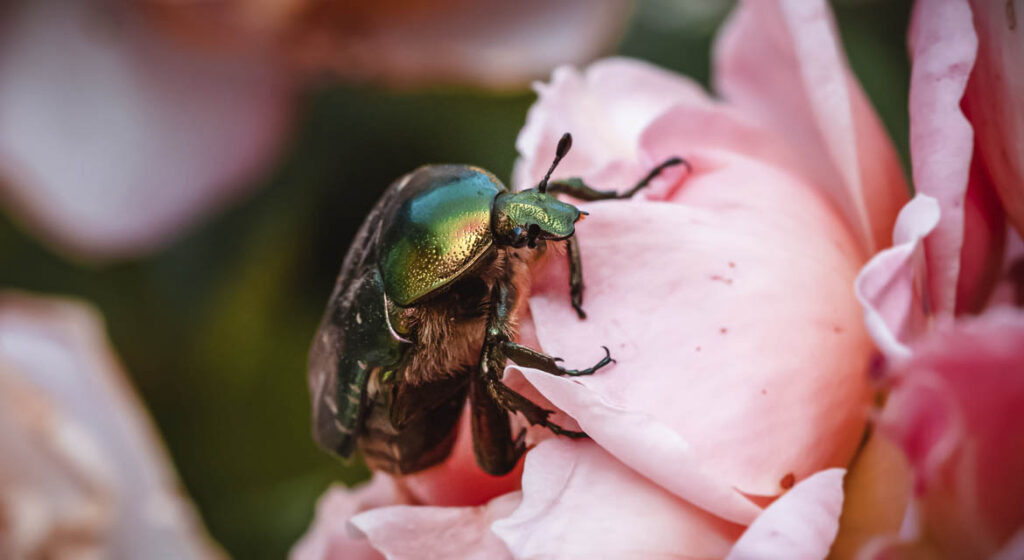
Truly Nolen GUARANTEE
If you’re not completely satisfied, you’ll get a full refund on your most recent service with our 100% money back guarantee.
Common Species of Beetles
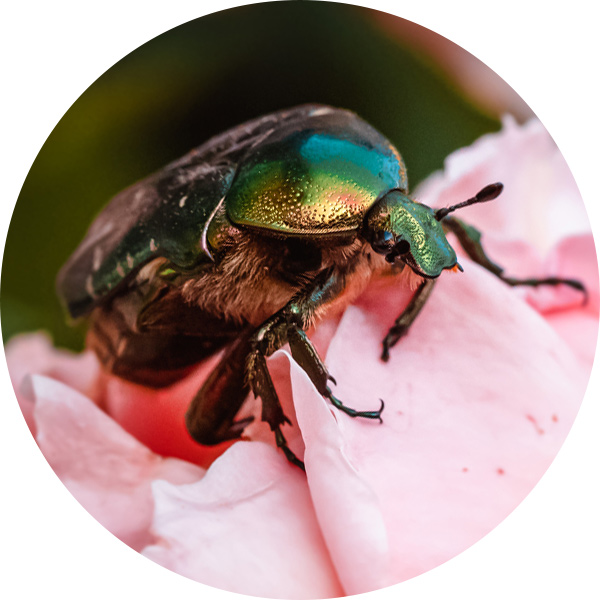
Japanese Beetle
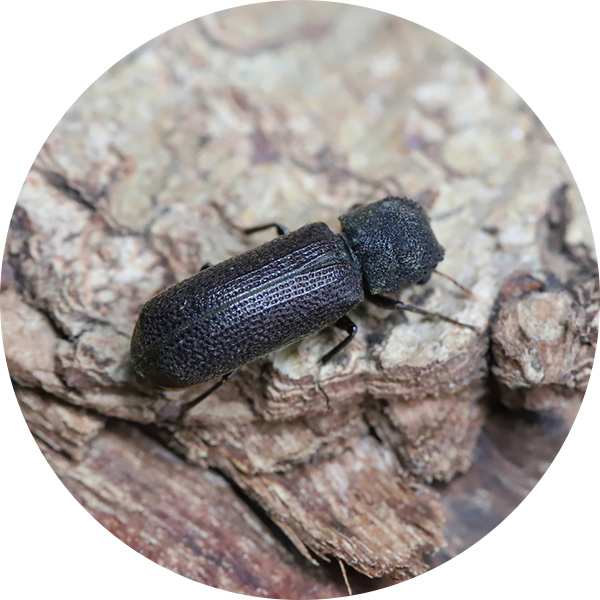
Powderpost Beetle
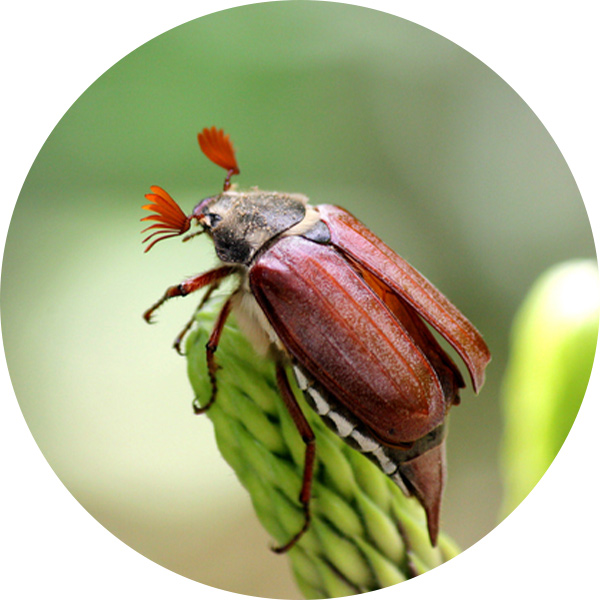
June Beetle
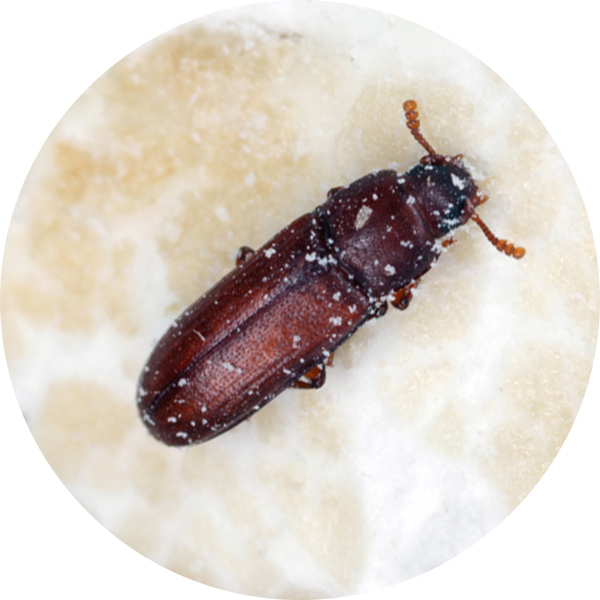
Flour Beetle

Carpet Beetle
How To Identify Beetles
Beetles are a diverse group of insects known for their hard exoskeleton and distinct wing covers. They can be found in various habitats and play important roles in ecosystems, but some species can be pests, causing damage to crops, stored products, or wooden structures.
Beetle Appearance
Beetles are characterized by their hard exoskeleton, forewings modified into hardened elytra, and chewing mouthparts. They display immense diversity in size, shape, and coloration, with over 350,000 known species worldwide. Beetles can range from a few millimeters to several centimeters in length, and their body shapes vary from elongated and slender to compact and rounded.
Beetle Habitat
Beetles inhabit diverse ecosystems, including terrestrial, freshwater, and marine environments. They can be found in almost every habitat on Earth, such as forests, grasslands, wetlands, deserts, and even urban areas. Some beetles are adapted to specific microhabitats, like wood-boring beetles that reside in dead trees or aquatic beetles that live in ponds and streams. Their adaptability allows them to occupy various ecological niches worldwide.
Beetle Diet
Beetles display remarkable dietary diversity, as they feed on a wide range of organic matter. Some species are herbivores, consuming plant material such as leaves, stems, fruits, and nectar. Others are predators, preying on insects, spiders, or other small invertebrates. Certain beetles are scavengers, feeding on decaying matter, dung, or carrion. There are also parasitic beetles that live off the body fluids or tissues of other animals.
Beetle Behavior
Beetle behavior varies among species but often includes distinct characteristics. They have well-developed senses, enabling them to detect food, mates, and predators. Many beetles exhibit various locomotion modes, such as walking, flying, or swimming. Some species possess specialized adaptations like strong mandibles for defense or efficient prey capture. Beetles may display social behaviors, including aggregation, cooperative feeding, or parental care. They communicate through visual signals, chemical cues, and acoustic signals like stridulation.
Beetle Reproduction
Beetle reproduction involves a diverse array of strategies. Most beetles have sexual reproduction, with separate sexes and internal fertilization. Mating rituals and courtship behaviors are common, involving specific movements or sounds to attract mates. Females lay eggs, often in suitable substrates like soil, plant tissue, or animal remains. Beetle larvae, called grubs or larvae, undergo distinct developmental stages and exhibit various feeding strategies. They eventually undergo metamorphosis and transform into adults.
Beetle Prevention
Preventing and controlling beetles can be challenging due to their widespread distribution and diverse habitats. Some measures to mitigate beetle infestations include implementing good sanitation practices to eliminate potential food sources, proper storage of susceptible materials, sealing entry points to buildings, and reducing moisture or standing water sources.
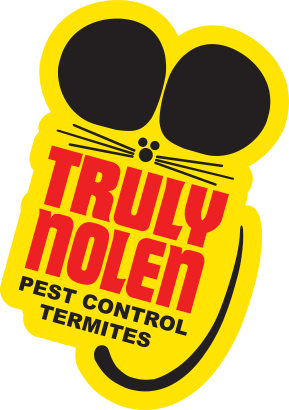
$50 Off Year Round Pest Control
Truly Nolen is a family-owned company with 85 years of experience providing the best pest control. If you’re not completely satisfied, you’ll get a full refund on your most recent service with our 100% money back guarantee.
The Truly Nolen Approach
Environmentally Conscious
We work to minimize our impact on the environment by using naturally occurring materials whenever possible.
Pet Friendly
Truly Nolen uses an Integrated Pest Management (IPM) approach designed with your pets in mind.
100% Money Back Guarantee
If you’re not completely satisfied, you’ll receive a full refund on your most recent service.
How Truly Nolen Gets Rid of Beetles
Truly Nolen follows a systematic approach to eliminate beetle infestations.
- Inspection: Trained technicians conduct a thorough inspection to identify the type of beetle and the extent of the infestation. This helps determine the most effective treatment methods.
- Identification: Accurate identification of the beetle species is crucial for implementing targeted control measures. Different species may have specific habits, vulnerabilities, and treatment options.
- Treatment Plan: Based on the inspection and identification, a customized treatment plan is developed. This may involve a combination of methods such as insecticide application, targeted treatments, exclusion techniques, and environmental modifications.
- Insecticide Application: Truly Nolen may use appropriate insecticides to directly target adult beetles or their larvae. The choice of insecticide depends on the species and the severity of the infestation.
- Exclusion Measures: Sealing off entry points and potential hiding places is important to prevent further infestations. Truly Nolen may recommend sealing cracks, gaps, and openings in structures to minimize beetle access.
- Monitoring and Follow-up: After the initial treatment, regular monitoring is conducted to assess the effectiveness and identify any remaining beetle activity. Additional treatments or adjustments to the control plan may be made as needed.
Frequently Asked Questions
How do I identify the type of beetle infesting my property?
Identifying beetles can be challenging due to their vast diversity. However, you can start by noting the beetle’s physical characteristics, such as size, shape, color, and unique features. It can be helpful to consult with a pest control professional or use online resources and identification guides for accurate identification.
Are all beetles harmful or destructive?
No, not all beetles are harmful or destructive. While some beetles can cause damage to crops, stored products, or wooden structures, many beetles play beneficial roles in ecosystems, such as pollination and decomposition.
Can beetles be controlled using DIY methods?
DIY methods can help manage small beetle infestations or prevent them from occurring. This may include maintaining proper sanitation, sealing entry points, removing potential food sources, and using insecticidal sprays or traps. However, for larger or persistent infestations, it is often recommended to seek professional pest control services.
Are beetles harmful to humans or pets?
Most beetles are not harmful to humans or pets. However, some beetles, such as blister beetles, can release irritating substances or have bites that may cause allergic reactions or skin irritations. It’s essential to avoid direct contact with unfamiliar beetles and consult with a medical professional if any adverse reactions occur. Learn More!
How can I prevent beetle infestations?
Preventing beetle infestations involves maintaining good hygiene, removing potential food sources, sealing entry points, and implementing pest-proofing measures. Regular inspection and early detection of any signs of beetle activity can also help prevent infestations from becoming more significant problems. Learn More!

